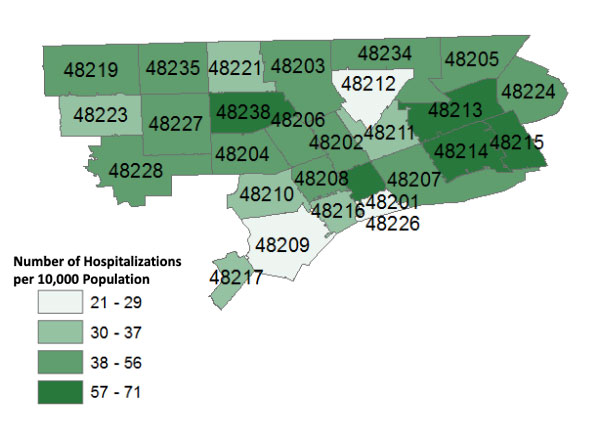Detroit’s East Side is Already Polluted. Will Fiat Chrysler Make It Worse?
The impact area of FCA’s Jefferson North assembly plant expansion has elevated levels of air pollution and asthma. Residents worry the company’s emissions plan won’t help.
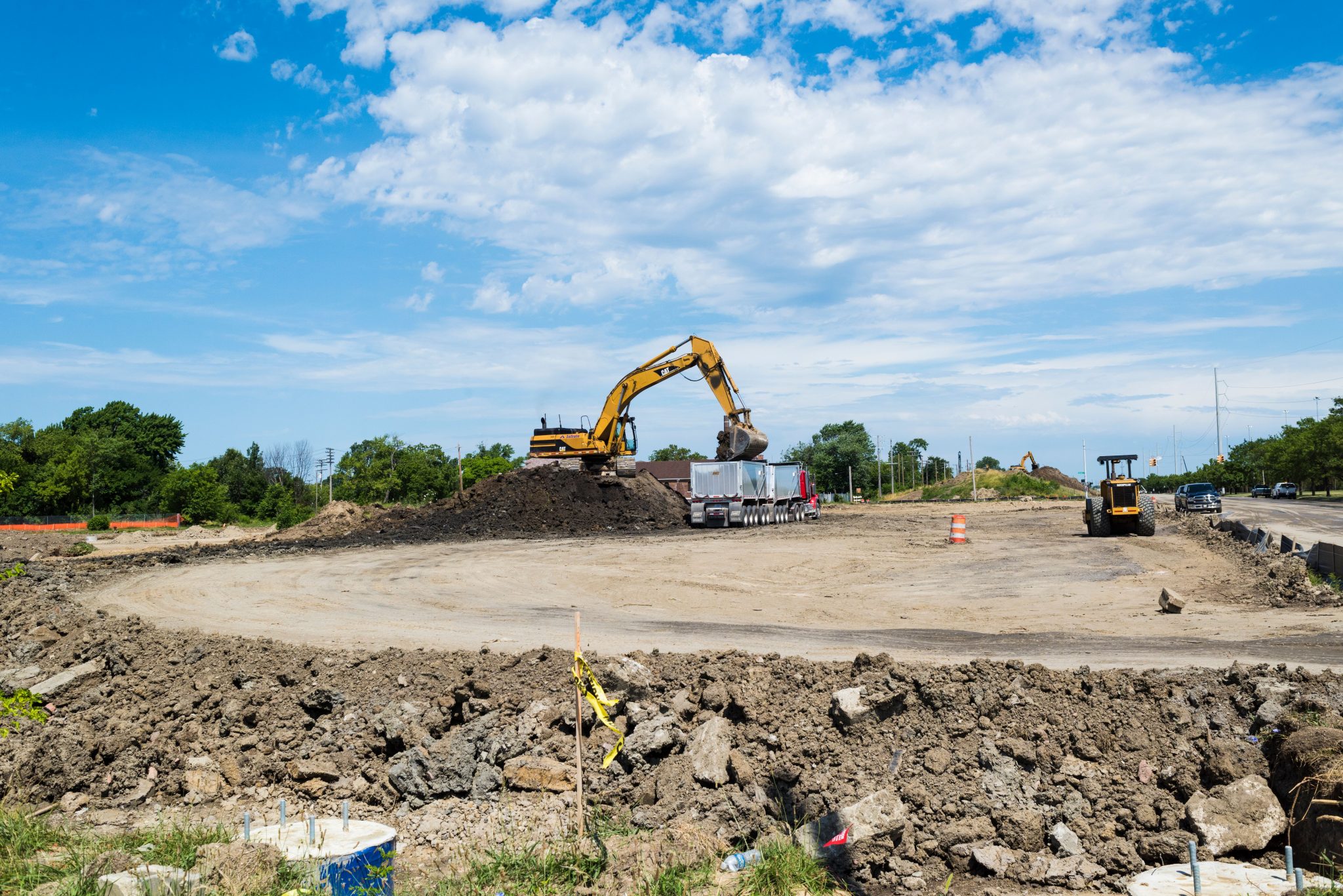
When Amoni Pitts hears trucks working one street over from where she lives, she worries about being able to breathe.
“I have asthma real bad. I have trouble breathing. So, I feel like all this construction and dust and everything, it’s not good for me,” says Pitts.
Behind her house on Beniteau Street, trucks are making a parking lot for a Fiat Chrysler expansion project that includes a new assembly plant and updates to the Jefferson North Assembly plant.
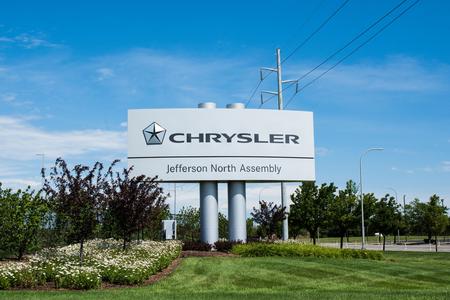
Like Pitts, many people in the area suffer from asthma. Rates for adults in Detroit are 29 percent higher than in the rest of the state. And hospitalization rates where Pitts lives are among the highest in the city, according to a 2016 report from the Michigan Department of Health and Human Services.
Now, environmental activists are worried that pollution, which impacts people with asthma, is going to increase in the neighborhood because of the new plant. Why? Because of the paint. When paint is applied to vehicles, fumes are released. And those fumes contain something called volatile organic compounds – or VOCs – that can get into the air.
“We have here an increase of emissions in a predominantly black community. And they are reducing emissions in Warren, which is a predominantly white community. You just enter into this textbook environmental racism equation.” – Gregg Newsom, community activist
Michelle Martinez, a coordinator with the Michigan Environmental Justice Coalition, says when she and other coalition members learned that a factory was coming here “that really raised a red flag for us because we’re already in illegal limits for volatile organic compounds here in the Detroit area.”
Martinez says volatile organic compounds combine with nitrous oxide and heat to make ground level ozone.
“So on high heat days we get ozone action alerts: ‘Don’t run your lawn mower… Don’t fill your car with gas,’ because those immediate fumes actually create a toxic soup when heated up that make your lungs expand and swell up and it makes it very difficult to breathe.”
Ozone is regulated. And because the Detroit region currently has more of it in the air than is legally allowed by the Environmental Protection Agency, Fiat Chrysler couldn’t build a an assembly facility if it was going to add to the pollution in the area.
So the automaker needed to find a solution.
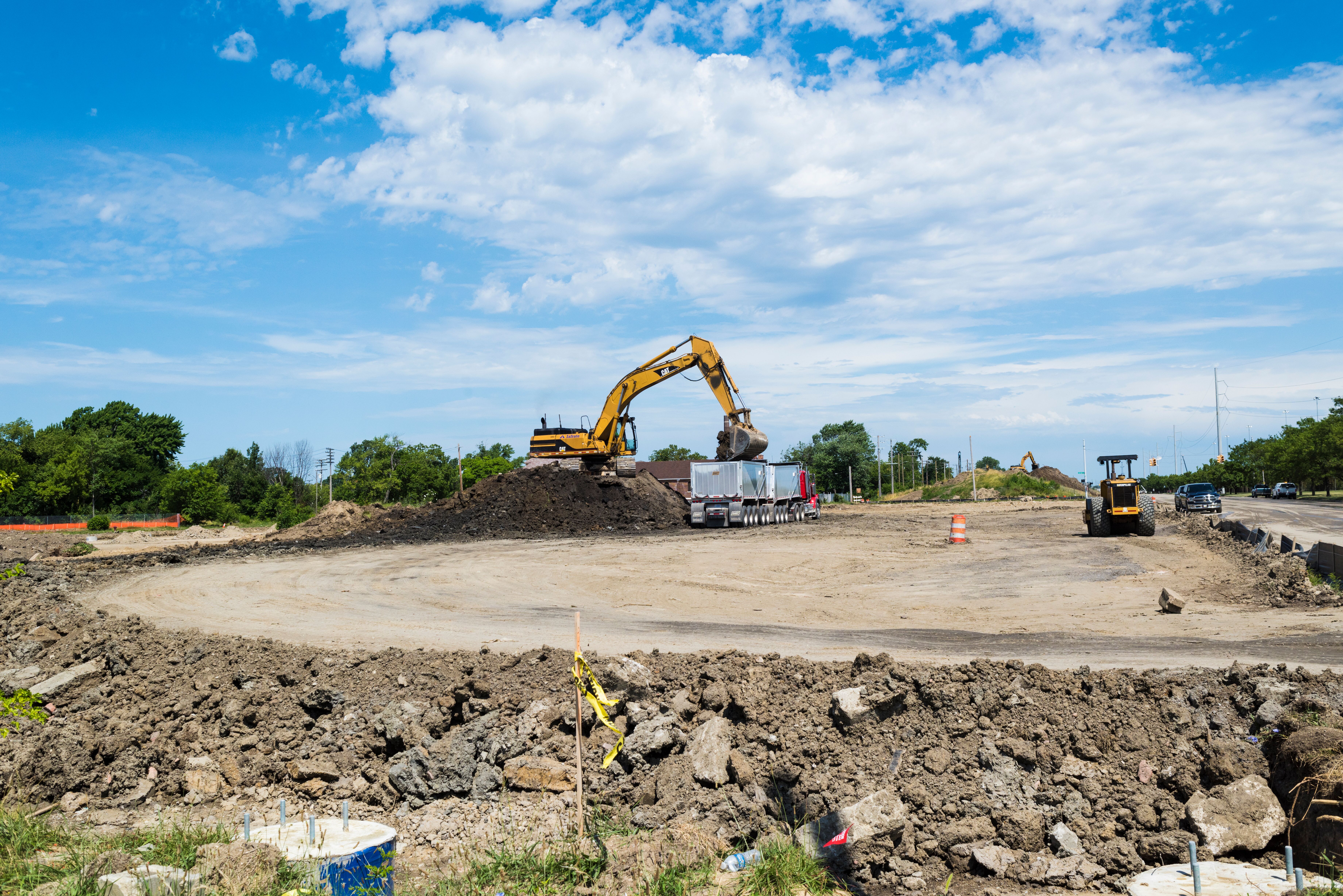
Greg Rose, FCA’s Environment Health and Safety director, says the company looked at other plants that had figured out how to reduce pollution and copied what they were doing.
Without getting into all the technical details, Rose says Fiat Chrysler essentially designed its proposed factory to be able to heat up volatile organic compounds and break them down before putting them into the air. Rose says that should reduce pollution, but some harmful fumes will still get out. So the company had to think outside the box in order to meet the EPA’s emission standards.
“When you talk about air quality, you’re really talking about a regional issue. Air is ubiquitous, so it doesn’t stay put, it moves around,” says Rose.
Using this concept, Fiat Chrysler figured out its expected emissions for the new Detroit plant. Then, it plans to offset that by reducing emissions at a nearby plant in Warren by the same amount, plus 10 percent more.
That’s “a ten percent reduction for the Southeast Michigan area so the overall air quality has been improved at the same time we’re building a new facility,” says Rose.
Sounds pretty good, right?
“What we overwhelmingly heard is that people wanted to protect their public health, they wanted to make sure they were okay, those living surrounding the plant.” – Regina Strong, the Environmental Justice Public Advocate at EGLE
Well, not to Gregg Newsom, an activist living with his wife and kids near the forthcoming Detroit plant. He started the Facebook group Fiat Chrysler Impact Area Community News after finding a mailer on his door about the plant expansion. Newsom also has been covering plant developments for Detroit People’s Platform, a social justice-focused media platform where he manages communications. For Newsom, Fiat Chrysler’s move to try to get air quality permits by reducing pollution in Warren is discriminatory.
On the east side of Detroit “we have here an increase of emissions in a predominantly black community. And they are reducing emissions in Warren, which is a predominantly white community. You just enter into this textbook environmental racism equation in order to make this happen,” says Newsom.
Community members and advocates got a chance to voice concerns at a public hearing hosted in April by the Michigan Department of Environment, Great Lakes, and Energy — known as EGLE. The regulatory agency also took comments online as part of the required air quality permit process.
“What we overwhelmingly heard is that people wanted to protect their public health, they wanted to make sure they were okay, those living surrounding the plant,” says Regina Strong, the Environmental Justice Public Advocate at EGLE, a new position created under Governor Gretchen Whitmer’s administration in April. Strong says EGLE also heard from commenters that “they wanted some level of benefit to the community in the process. They didn’t want to just have an increase in emissions where they live and not see any opportunities for that to be mitigated in some way.”
The decision of whether or not to grant the permit to pollute from Fiat Chrysler was left up to Mary Ann Dolehanty, EGLE’s Air Quality Division Director.
“How EGLE responded to the application was to grant the permit with modifications based on comment we received from the community,” says Dolehanty.
EGLE gave the car company until late October to present on two projects: one on additional air monitoring and another on a community benefit of its choosing related to air quality. If EGLE is not satisfied with what’s presented, the agency says it can hold up the permit process.
“We’ve got so many things out here in the air and so many things that burn up, I don’t see it being any worse than what we already have.” – Loretta Lloyd, resident
Greg Rose with Fiat Chrysler says he’s not sure exactly what the company will be presenting yet.
“We’ll request input from the community – either through the city council or the local community – to make sure that we heard accurately where their concerns were and that these projects had the ability to address them,” says Rose.
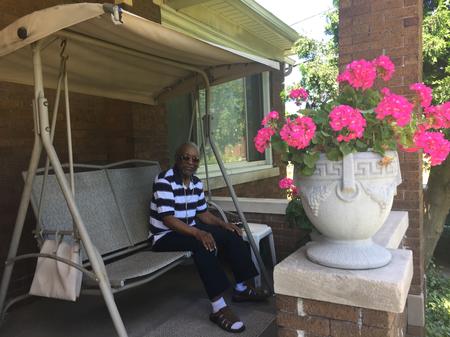
In the meantime, activists are knocking on residents’ doors to take inventory of who has breathing problems. They plan to present this information to Fiat Chrysler. According to Gregg Newsom, who’s been involved with the survey effort, the group is still working out how exactly it will use this information but it may request that Fiat Chrysler regularly issue air filters to homes where people have respiratory issues.
For now, EGLE has said that Fiat Chrysler can proceed with its plan to offset emissions in Warren. Which is why construction can be heard from Beniteau Street in Detroit.
Loretta Lloyd sits on a porch swing there surrounded by bright pink potted flowers. She’ll be able to see the plant from here once it’s finished. In general Lloyd says she sees the nearly 5,000 promised jobs as progress. And unlike her neighbor Amoni Pitts, Lloyd is one of a handful of residents on this block who say they’re not worried about air quality.
“We’ve got so many things out here in the air and so many things that burn up, I don’t see it being any worse than what we already have,” says Lloyd. “My husband and I spend a lot of time sitting on the porch – but we spend a lot of time in the house – so if the fumes are out here, we’ll just go in the house.”
Meanwhile, Newsom, who lives a little bit further away from the plant but still in the impact area, says he and his wife are holding their breath to see which one of their three kids may end up with respiratory issues.
Laura Herberg’s reporting was produced in partnership with the Race and Justice Reporting Initiative at the Detroit Equity Action Lab, a program of the Damon J. Keith Center for Civil Rights. The initiative is funded by the Knight Foundation, Ford Foundation and Community Foundations for Southeast Michigan.

